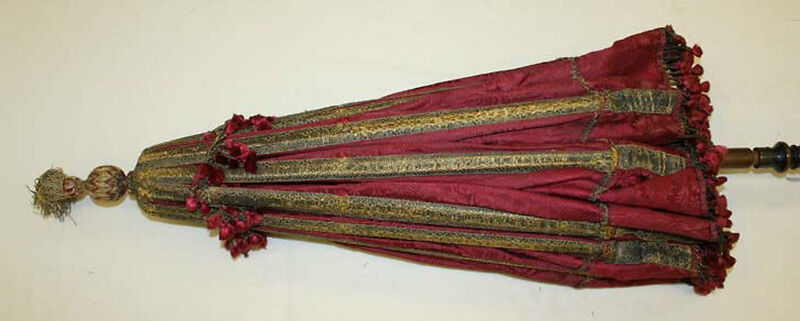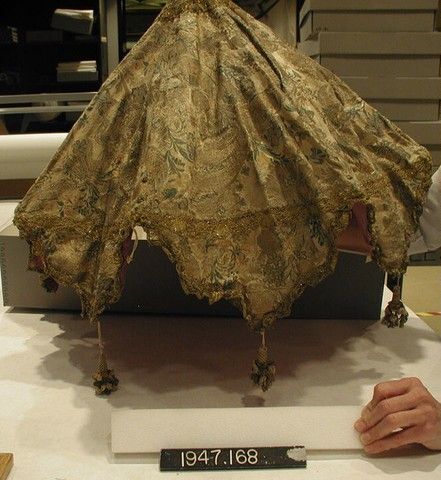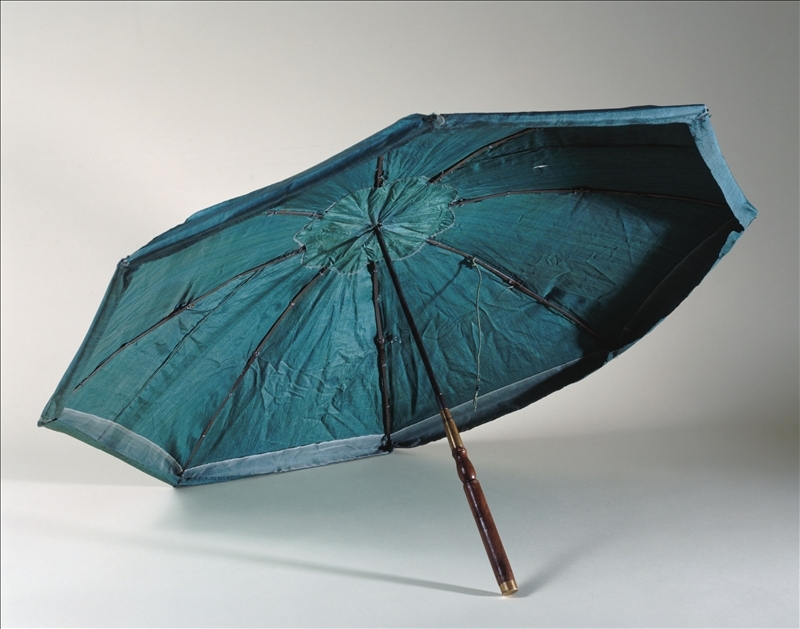16th - 17th Centuries
From the ancient world until the sixteenth centuries, little information survives about umbrellas, though records do survive that indicate that the Romans utilized them from the 3rd (300 B.C.E.) to 5th (500 B.C.E) centuries as protection from the sun. The umbrella continued to be a useful fashion accessory to be used for protection from the sun.
The umbrella reappears in the sixteenth and seventeenth centuries. In contrast to the limited materials in the past, additional textiles such as cotton, silk, and lace as well as different feathers, ivory, and gemstones all became materials employed in umbrellas.
Another important innovation developed: the use of oil and wax to make the sun shade now water resistant and a proper umbrella as we think of it today. Materials that are used today are more resistant types of nylon.
The two parasols shown below are from France and Italy.
During the sixteenth and seventeenth centuries, the parasol was still a female fashion accessory. The fashion trends during this time for men: Men wore layers, a coat and pants, with a white linen ruffled shirt. The fashion trends for women: Women wore corsets with a smock and petticoats that would have bands of lace or fringe.
The fabrics during this time became heavier and the colors were darker than past centuries.
In the 1709 C.E., Paris master purse maker, Jean Marius created the pocket parasol you see below.
The "Marius" had folding ribs and could be folded up and stored like the umbrellas we have today. Because Marius was a purse designer and he wanted acceptance of his invention, he introduced beautiful colors that would compliment ladies outfits.
List of pages:


